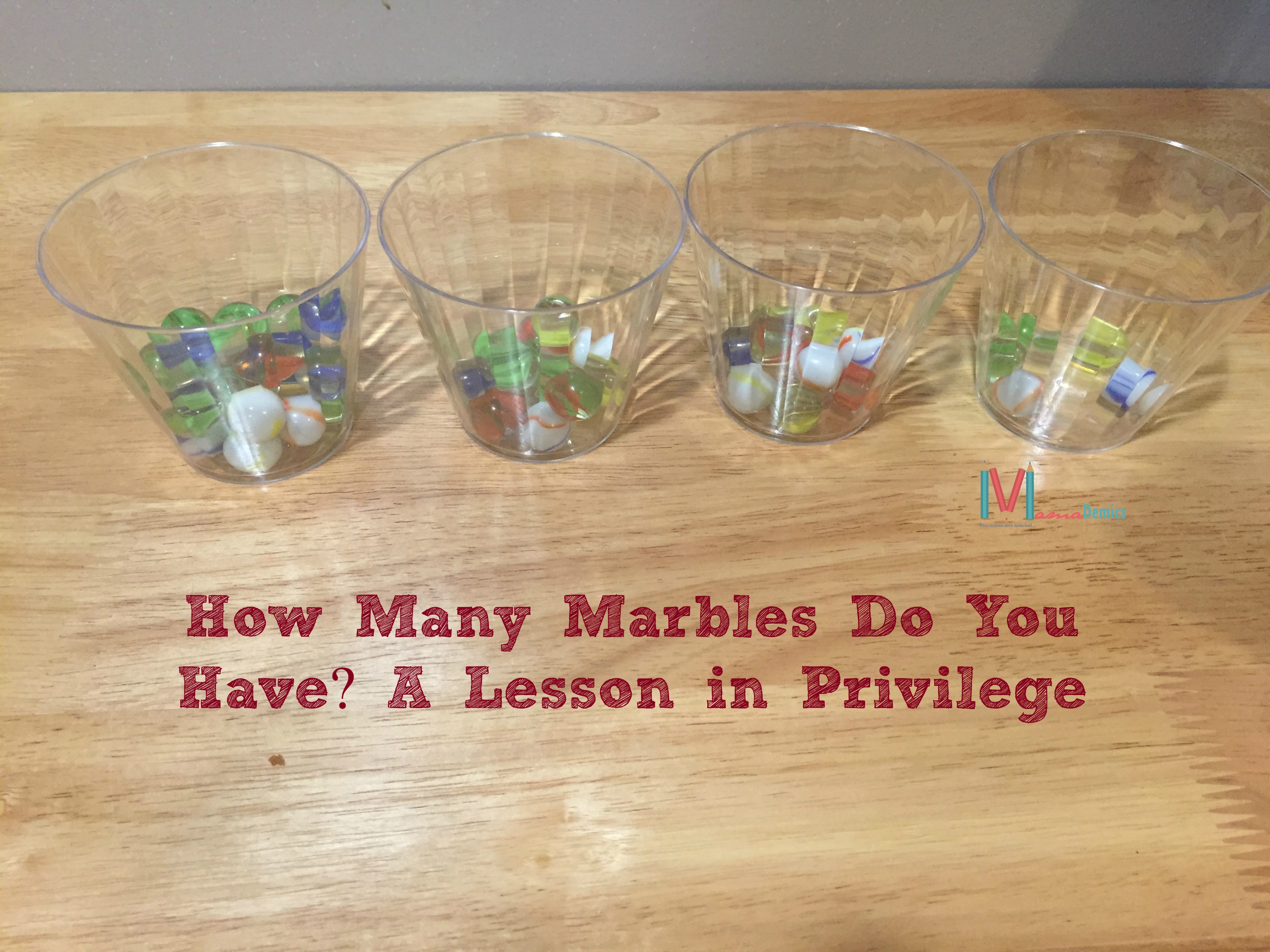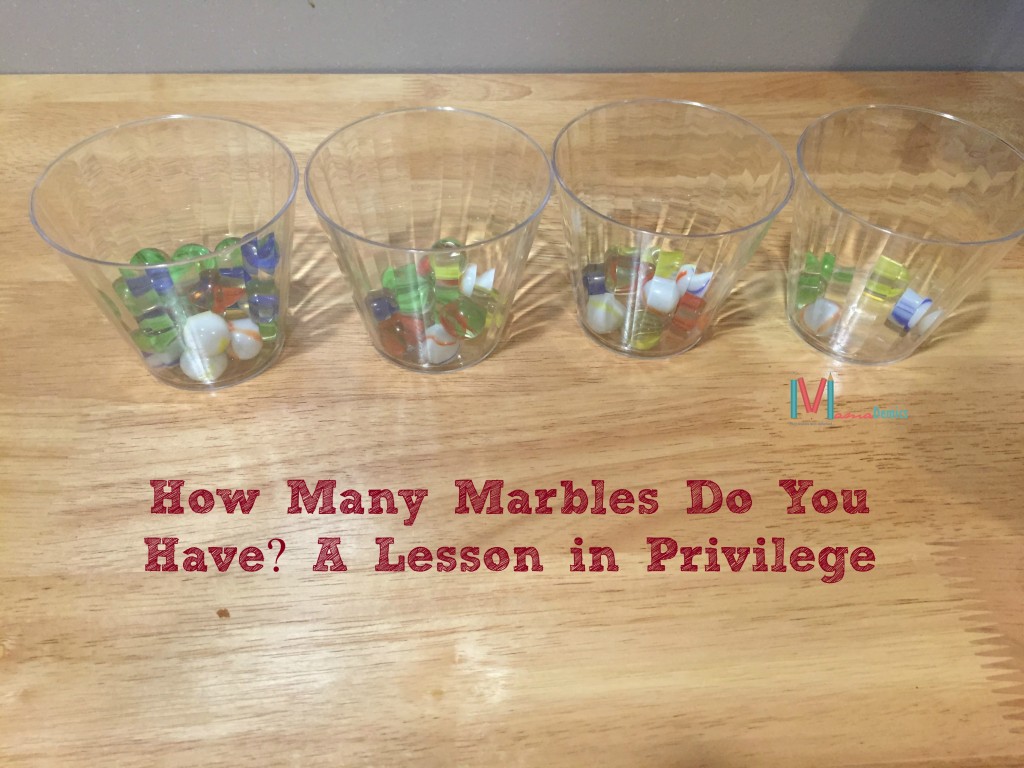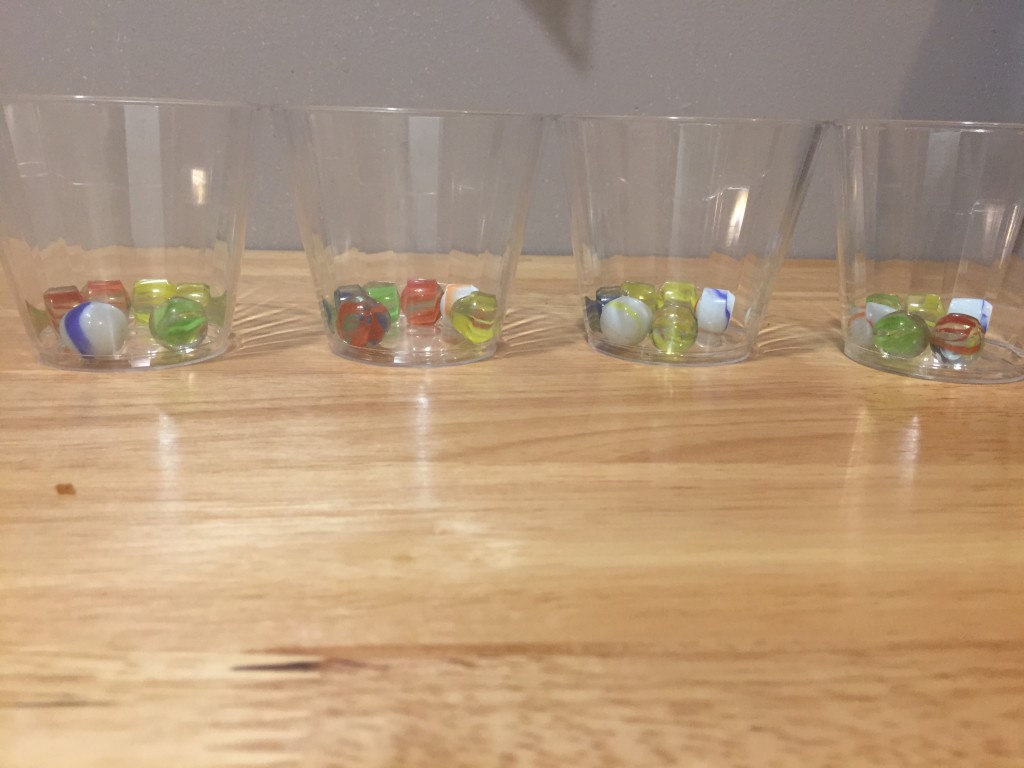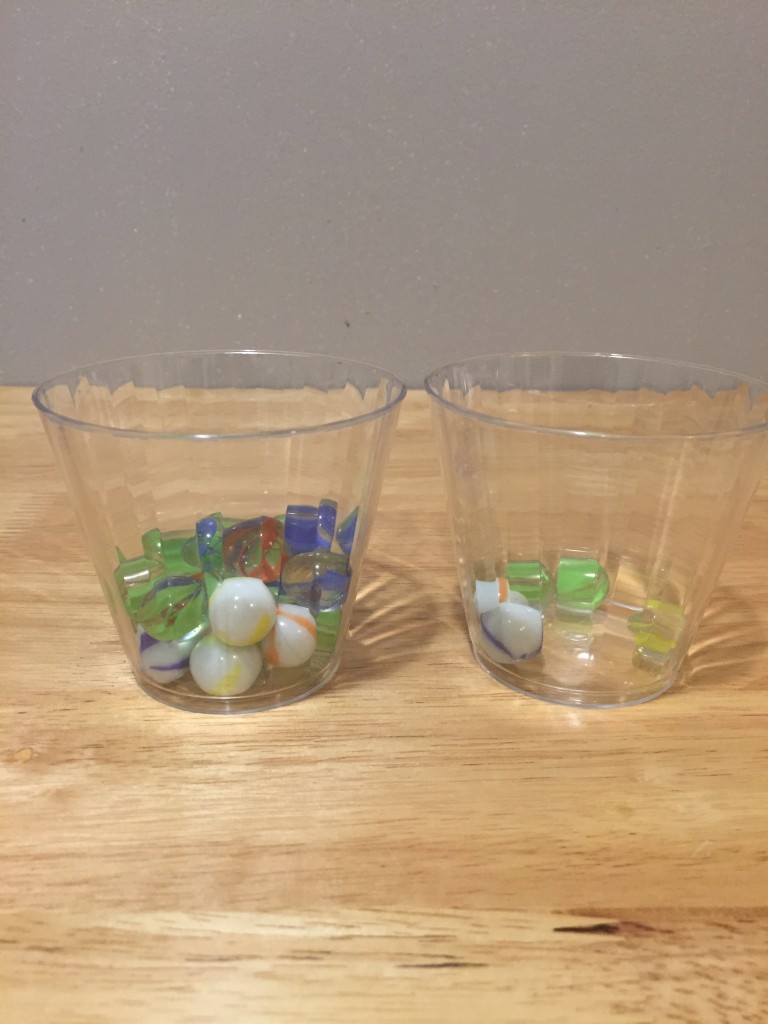How Many Marbles Do You Have |A Lesson in Privilege
Happy Monday, folks! If you’ve been following me on Instagram, Facebook, or Twitter, you know I spent the last few days at an amazing conference for parenting bloggers called Type-A Parent. I’ll share more about that on Wednesday or Friday, but today I want to focus on an activity I did in my class last week to teach my students about privilege. If you’re unfamiliar with privilege, these are some good starting points: Explaining White Privilege to a Broke White Person and On White Privilege.
I typically have my students participate in a privilege walk, but our classroom space was too small this semester. I decided to use marbles and plastic cups instead, and it worked really well. I actually think you could do this activity with kids as young as middle school.
Materials needed (affiliate links below):
Cups preferably clear ones
A privilege walk list. I’ve used these two in the past (Privilege Walk 1 or Privilege Walk 2), but I like to combine them, so there is a balance between the questions of gender, race, sexuality, disability, and socioeconomic class. (Check out Buzzfeed’s Privilege Walk for a visual look)
Prior to this completing this activity, I encourage you to have your students read articles or essays that aid them in understanding privilege. You should also spend time discussing the basics in class. We were pretty close to the midpoint of the semester when we did this activity, so my students have been reading a ton of amazing articles about the American Dream, educational differences in America, and of course privilege.
At the start of class, explain the activity and remind each student that they must be silent during the activity. Instead of having your students walk forward or backward, you ask them to put a marble in or take a marble out. I started each student with six marbles, so that they were on an equal playing field.
During the privilege walk, students watch their classmates move ahead of them or behind them. With this activity, students instead heard the clank of marbles hit one another or the shuffle of students removing marbles from their cups. Once the activity ended, I had students remain silent and asked them to count their individual marbles. I then separated them into three groups based on the number of marbles present. This varied by class because one of my classes has a lot more men than women in it. Group One: 17-21 marbles; Group Two: 16-10 marbles; Group Three: 9 or less.
Once they were separated, I kept them silent and then asked them to write about how they felt during and after the activity. I let them share it with their individual groups and then we moved to a larger group discussion. I started with asking them to share what they wrote and then had them connect their experiences back to the readings.
If I did this activity with younger children, I would use it as a tool to show them that everyone doesn’t start with the same number of marbles. Even if they end up in the same places, the route there is not the same and comes with a struggle for some of them.
Want to learn more about how privilege works? Take Raising an Advocate 101 (Self-Paced)













